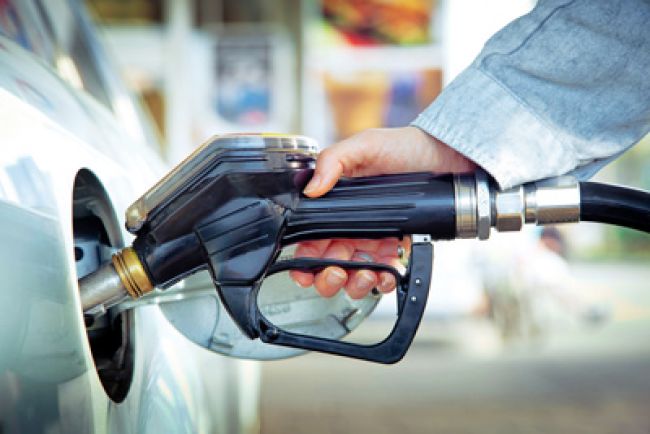
Strategies to Reduce Fuel Theft and Fuel Card Misuse
Yes, it could happen: A nefarious individual could approach one of your pieces of equipment parked on the lot and siphon fuel right from the tank.
What is perhaps more likely, though, is loss due to improperly used fuel cards.
“By and large, employees do the right thing,” said Geoff Scalf, director of global energy business development at Telogis (www.telogis.com). “But you will have some employees who will make poor choices.”
Leveraging the proper technology and techniques can help ensure fuel theft is kept to a minimum.
It’s important that employees understand what the proper use of fuel cards means. Aside from using the cards to fill up personal vehicles, Scalf said he often hears of employees who travel in groups and don’t think twice about using one employee’s card to fill up several vehicles at once. There’s nothing fraudulent about that sort of misuse, but it can make for messy paperwork, numbers that don’t add up and misallocation of funds in the future. Another example of misuse: when an employee pulls a trailer with, say, a backhoe loaded onto it, and then uses the card to top off both the truck and backhoe without changing any codes in the system.
Telogis Fleet offers one way to keep closer tabs on misuse, whether or not it was intentional. The Telogis platform includes a module that gives increased visibility into fuel usage.
“It looks at fuel transactions and compares those to miles driven, to the location of the vehicle, to when the transactions actually occurred,” Scalf said. “It also looks at what you would expect the miles per gallon to be for that vehicle. Then it will flag anything that is outside the norm. Now, the customer can easily analyze the data; identify trends, opportunities and maintenance issues; as well as identify which transactions may be fraudulent or if there’s been misuse of the fuel card.”
Before implementation of the Telogis platform, it’s not unusual, Scalf said, to see 10 to 20 percent of fuel involved in misuse or theft. Because of the advantages of increased visibility, Telogis does have competitors in the fleet management software space. What makes the company different, according to Scalf, is that it works with automotive and equipment OEMs, installing telematics hardware with Telogis software so that it is available for use from the moment vehicles are delivered – minimizing the downtime and hassle of installations.
The increased visibility a fleet management program provides can mean benefits beyond reducing fuel theft and misuse. On the list: increased driver safety, work order management, better vehicle and employee allocation, and more.
Other Strategic Efforts
When it comes to addressing fuel theft in particular, the use of monitors, sensors and anti-siphoning devices also can be strategic efforts. Traditional safety and security precautions still apply; telematics simply takes things further. And if the data is available, why not use it?
“Fuel management definitely requires controls,” said Todd Carlson, principal manager for fleet asset management at Southern California Edison. “An uncontrolled fuel program can induce shrinkage and theft across a fleet. From my experience, even the worst scenarios of theft typically impact only a small percentage of the total annual fleet consumption, yet the dollar amounts can be significant.”
Carlson noted that Southern California Edison has had very few documented instances of fuel theft in recent years; a number of efforts to reduce it are in place.
“The majority of our fuel consumption and pumping occurs at bulk facilities at our service centers, which are behind fences, well-lit and typically monitored with cameras,” he said. “Off-site fueling is reviewed and approved by the driver’s manager via expense reporting.” In addition, SCE utilizes a telematics system that allows for tracking vehicle location and fuel consumption, and has Veeder-Root systems on most bulk tanks to confirm bulk delivery volumes.
Utility fleet professionals can be quite surprised when they first become aware of what’s actually been happening with their fuel, Scalf said. But the first step toward any improvement is being aware of the issue.
About the Author: Fiona Soltes is a longtime freelance writer based just outside Nashville, Tenn. Her regular clients represent a variety of sectors, including fleet, engineering, technology, logistics, business services, disaster preparedness and material handling. Prior to her freelance career, Soltes spent seven years as a staff writer for The Tennessean, a daily newspaper serving Nashville and the surrounding area.
*****
When Combating Fuel Theft, Don’t Forget the Basics
In addition to strategic use of technology, fighting fuel theft and fuel card misuse starts with some practicalities. Following are several questions fleet managers should consider as they address these issues:
• Are fuel tanks locked and keys secure?
• Are vehicles parked in safe, secure, well-lit areas?
• Are employees aware of what constitutes proper fuel card use?
• Do employees understand why reducing fuel theft matters?
• Are consequences for improper fuel card use in place and enforced?
• Is off-site fueling regularly and comprehensively reviewed?
• Is there adequate visibility into how, when and by whom fuel cards are being used?
• Have anti-siphoning devices and/or sensors or monitors been considered/installed where necessary?

